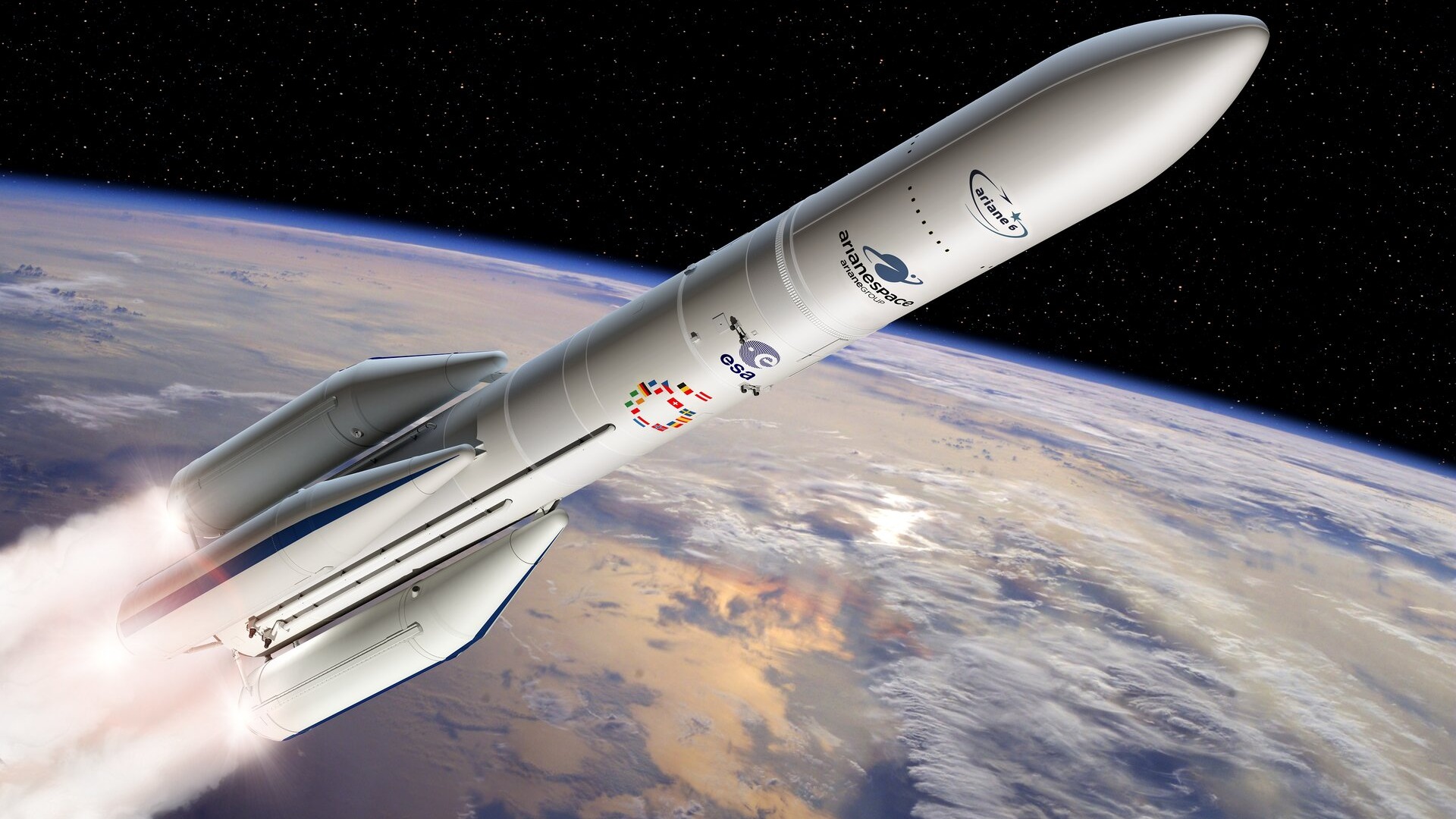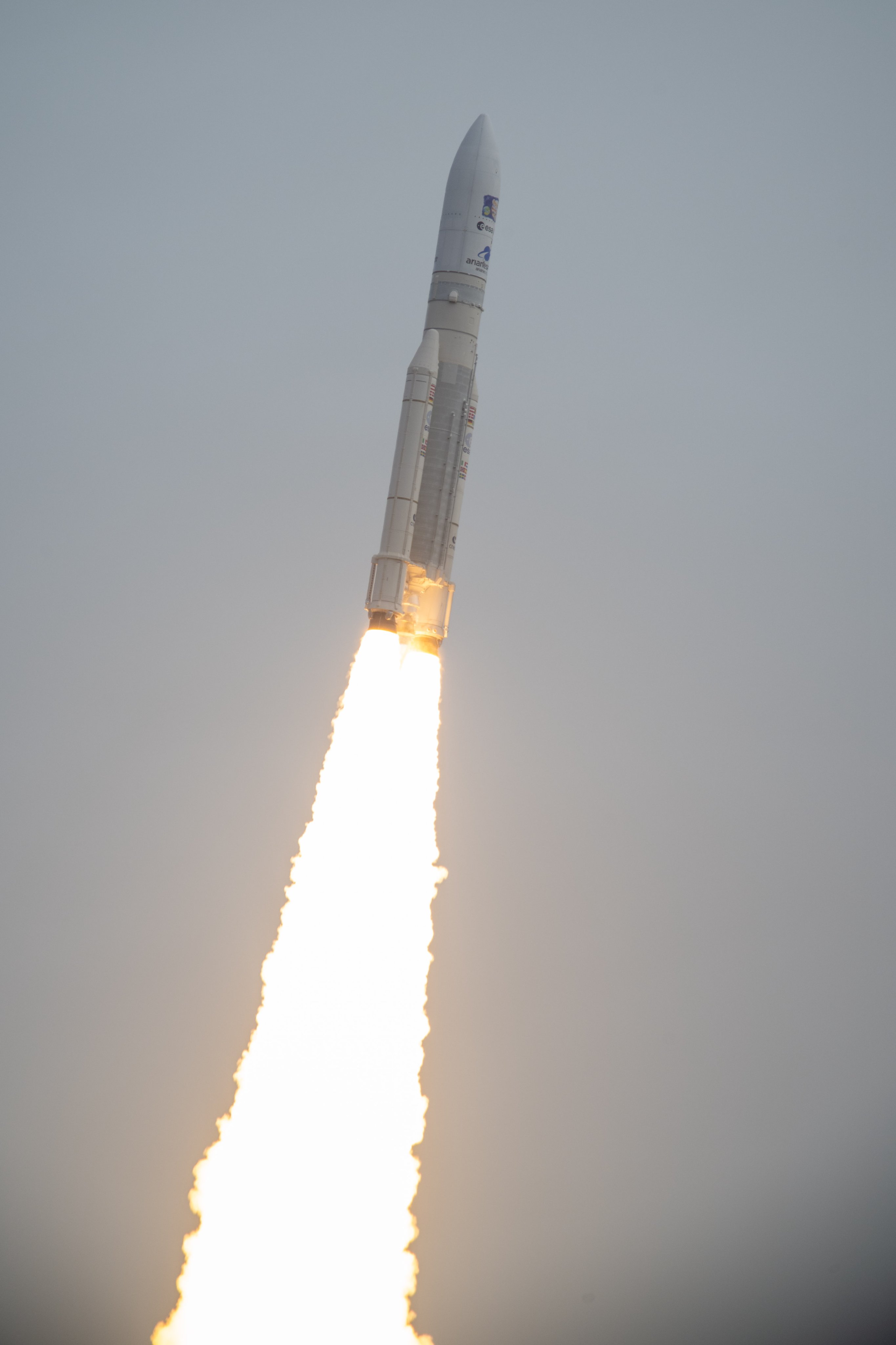When will Ariane 6 fly? Europe's new heavy-lift rocket battles delays as Ariane 5 era ends
A new European rocket is waiting in the wings.

As Europe's workhorse Ariane 5 rocket settles into retirement, its successor isn't yet ready to fly.
Officially, Arianespace's heavy-lift Ariane 6 rocket is scheduled to debut as soon as late 2023 — but competitor SpaceX may receive some of its business amid development delays that could push the European rocket's first flight into 2024 or beyond.
Decision time is coming soon, given that the Ariane 5 just flew its 117th and final mission on Wednesday (July 5).
Arianespace's CEO, Stéphane Israël, told Radio France last month that a launch date for Ariane 6 will be set in September. "We are in the homestretch," Israël said of launch preparations, emphasizing that Ariane 6 is on the launch pad (translation provided by Space.com).
Related: Europe's long-awaited Ariane 6 rocket won't launch before late 2023
ESA maintains the late 2023 target for Ariane 6's debut. In a June 8 update, the agency said that an overall launch system qualification review would take place later that month. Two hot firing tests (in July, and a new one added later this summer) will study a normal flight and a "degraded" one, respectively. Then Ariane 6's assembly for launch is expected in November.
The Ariane 6, first announced in 2014, is a heavy-lift rocket that will use modular construction and other cost-saving measures to try to keep pace with the competition, namely SpaceX. Its predecessor, Ariane 5, was one of the most reliable launching systems worldwide, having achieved success across most of its 117 launches since an early failure on its debut effort in 1996.
Get the Space.com Newsletter
Breaking space news, the latest updates on rocket launches, skywatching events and more!
But critics say it's time to pursue more advanced technology, especially given SpaceX's success. Elon Musk's company is currently riding a streak of more than 200 consecutive successful launches with its reusable Falcon 9 and Falcon Heavy rockets. (Reusability is a feature that Ariane 6 will lack, but Israël has said that's a result of using technologies available from a decade ago, and that a new generation of reusable European rockets will come a decade from now.)
SpaceX is working on its own new vehicle — Starship, the biggest and most powerful rocket ever built. Starship debuted April 20 on a test flight that ended with the vehicle's commanded destruction high over the Gulf of Mexico. The launch, and Starship's subsequent explosion, rained debris over several square miles in South Texas.
"The Starship rocket, when it took off, it had security conditions that we would not have accepted in Europe," Israël said in last month's interview.
Related: 8 ways that SpaceX has transformed spaceflight

Ariane 6 is years behind its initial forecasted first launch in 2020, which was delayed by issues including the COVID-19 pandemic and supply chain hiccups.
Even now, a German component supplier says the current late-2023 target is unlikely to be met: OHG told investors in a quarterly financial earnings call that a slip to 2024 is likely, according to NASA Spaceflight.
As delays persist, the European Commission penned a draft request in April to its member countries asking for an "ad-hoc security agreement" to "exceptionally launch Galileo satellites" using U.S. launch providers, according to Politico. Galileo is the independent European GPS system and is essential for matters ranging from navigation to the internet of things.
The commission suggests the heavy navigation satellites, absent Ariane 6, could be launched with SpaceX's Falcon series or United Launch Alliance's (ULA) still-unflown Vulcan Centaur. The new ULA rocket has encountered its own series of delays, which have pushed its planned debut from May of this year to a nebulous point in the not-too-distant future.
Ariane 6 has attracted other lucrative contracts from big companies like Amazon, however. Its estimated development cost stands at 4 billion euros ($4.15 billion) as of November 2022, according to Reuters. That's nearly double the original 2.4 billion-euro estimate ESA provided in 2015, but Ariane 6 is set to deliver payloads to space at a lower per-launch cost than Ariane 5.
Ariane 6's ballooning price tag is far from unique; cost overruns are common with big space projects. NASA's now-lauded James Webb Space Telescope cost $10 billion, at least triple the upper range of early estimates. JWST's December 2021 launch — atop an Ariane 5, by the way — was also 14 years past its initial 2007 target date, for numerous reasons.
Join our Space Forums to keep talking space on the latest missions, night sky and more! And if you have a news tip, correction or comment, let us know at: community@space.com.

Elizabeth Howell (she/her), Ph.D., was a staff writer in the spaceflight channel between 2022 and 2024 specializing in Canadian space news. She was contributing writer for Space.com for 10 years from 2012 to 2024. Elizabeth's reporting includes multiple exclusives with the White House, leading world coverage about a lost-and-found space tomato on the International Space Station, witnessing five human spaceflight launches on two continents, flying parabolic, working inside a spacesuit, and participating in a simulated Mars mission. Her latest book, "Why Am I Taller?" (ECW Press, 2022) is co-written with astronaut Dave Williams.
-
newtons_laws Quote from the article "Reusability is a feature that Ariane 6 will lack, but Israël has said that's a result of using technologies available from a decade ago, and that a new generation of reusable European rockets will come a decade from now."Reply
Hmm, Space X announced in 2005 that they were developing the Falcon 9, to be designed with re-usability of the 1st stage as a goal. It first flew (without re-using the 1st stage) in 2010, and successfully landed a 1st stage at the end of 2015, since then landing 1st stages over 150 times. So Space X had technology way more than a decade ago that had reusable potential....









